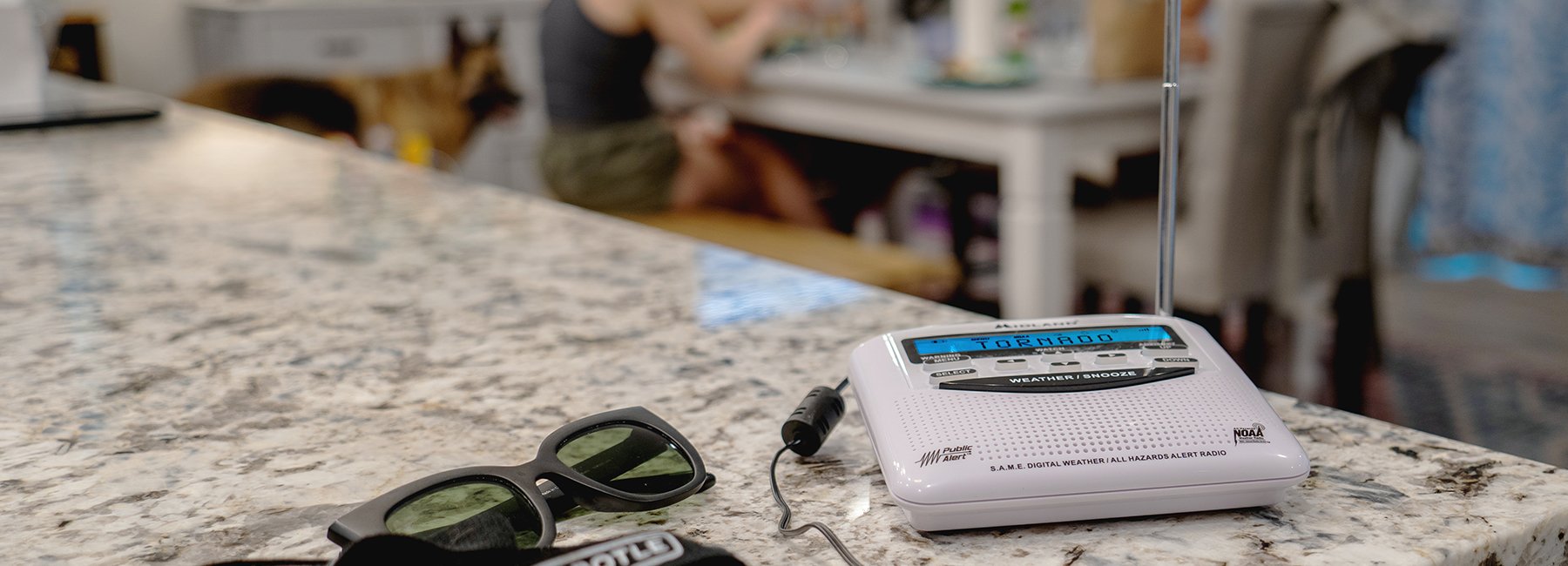
August 02, 2019
One of the most common question we get asked: "MyWR120 weather radio has all LED lights and NOAA flashing. It also gives out a beep every now and then. What does this mean?"When the LED lights on your WR120 weather radio are flashing, may be telling you it's not properly set up. Don't worry -- it's an easy fix! Read on to learn more about how to fix a Midland WR120 weather radio with all lights flashing.
The flashing of the lights and occasional beeping of the unit is typically caused when the radio has not received a Required Weekly Test (RWT) for more than ten days.
To turn the lights off, locate the ON/OFF switch on the right-hand side of the radio. Turn it OFF, then ON again. This should clear the flashing lights.
Remember, a NOAA Weather Radio must always be ON to function properly. When ON and plugged into the wall, it will silently monitor the NOAA radio signal. The radio will automatically alert you when the National Weather Service tells it to. Always leave the button in the ON position.

In extreme cases of weak signal strength an external antenna is needed. This antenna will plug into the red port marked EXTERNAL ANTENNA on the back of the radio.
Once you have properly programmed the WR120 weather radio for your home county, and have programmed it to monitor a NOAA transmitter that is dedicated to covering your county, the radio will operate on its own. If you have done these steps and you are still receiving “CHECK RECEPTION” messages, poor signal strength is the issue and the purchase of an external antenna is called for.


